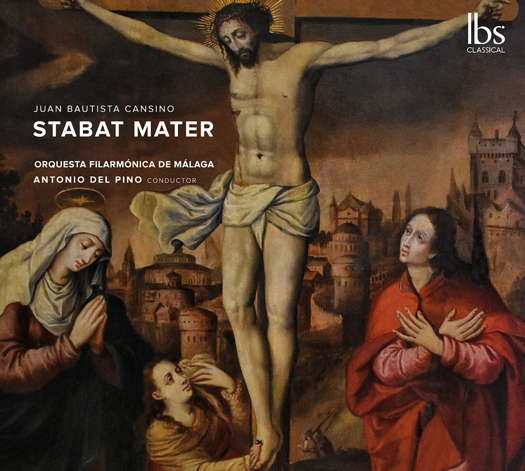 VIDEO PODCAST: John Dante Prevedini leads a discussion about Classical Music and Artificial Intelligence, including contributions from George Coulouris, Michael Stephen Brown, April Fredrick, Adrian Rumson and David Rain.
VIDEO PODCAST: John Dante Prevedini leads a discussion about Classical Music and Artificial Intelligence, including contributions from George Coulouris, Michael Stephen Brown, April Fredrick, Adrian Rumson and David Rain.
 SPONSORED: DVD Spotlight. Olympic Scale - Charles Gounod's Roméo et Juliette, reviewed by Robert Anderson.
SPONSORED: DVD Spotlight. Olympic Scale - Charles Gounod's Roméo et Juliette, reviewed by Robert Anderson.
All sponsored features >>
 DISCUSSION: What is a work? John Dante Prevedini leads a discussion about The performing artist as co-creator, including contributions from Halida Dinova, Yekaterina Lebedeva, Béla Hartmann, David Arditti and Stephen Francis Vasta.
DISCUSSION: What is a work? John Dante Prevedini leads a discussion about The performing artist as co-creator, including contributions from Halida Dinova, Yekaterina Lebedeva, Béla Hartmann, David Arditti and Stephen Francis Vasta.

Heartfelt Pathos
Juan Bautista Cansino's Stabat Mater, strongly recommended by GERALD FENECH
'... serenity and resignation beyond comprehension.'
Born in Malaga circa 1827, Juan Bautista Cansino lived during a time of great change both musically and socially. Still, at this time, his hometown was a quiet but energizing place, despite a population of some 100,000. Music wise, nearly all composers living in Malaga received their education within the precincts of the strict canons of cathedral scholasticism, and the local population could enjoy many original works composed in the language of the lyric repertoire of such renowned names as Bellini and Donizetti, whose music was a part of Malaga's cultural life during the early 1860s.
Cansino was educated in Malaga Cathedral, but the musical chapel of the city's first tempo had been the victim of several tragic events since 1803, and this weakened the stable ensemble of the Cathedral that solemnized the sacred liturgy. That said, the real reason that ended the service of these resources was the Concordat of 1851 between Pope Pius IX and Queen Elizabeth II. But if this great tradition was at an end, another practice was about to be born: that of hiring instrumental and vocal personnel for certain solemnities and festivities, especially those related to Holy Week. Indeed, this development favoured a type of repertoire in which the presence of an orchestra with large timbral forces was one of the most distinctive features of this practice. This gave rise to splendid musical evenings in which, based on sacred texts, and with a large number of vocal and instrumental performers, works of an open lyrical character were premiered in churches, in connection with the Lenten services of the city's penitential brotherhoods. The musical training centres, once reserved for the ecclesiastical elite, were now giving preference to private teaching for the wealthy classes, evening sessions for music lovers and amateurs, and the creation of philharmonic societies such as Malaga's in 1869.
Witness to all this was Juan Bautista Cansino, whose Stabat Mater we find on this issue. It was in 1854, the year of the premiere of this work, that Cansino competed for the post of second organ with Eduardo Ocon. The latter won, but this by no means meant the end of Cansino's relationship with Malaga Cathedral. Indeed, this love affair lasted until the composer's death in 1897.
Listen — Cansino: Stabat Mater Dolorosa (Stabat Mater)
(track 1, 2:06-2:59) ℗ 2021 IBS Artist :
Sadly, the music world is still awaiting a systematic and updated biography of Cansino, as well as a new revised catalogue of his works, particularly his lyrical and piano works which are still awaiting to see the first ray of hope. The thirteenth century Catholic hymn Stabat Mater, which portrays the suffering of Mary the Mother of God under the cross of her crucified Son Jesus, has, down the ages, been a source of great inspiration to many great composers. Pergolesi, Haydn, Rossini and Dvořák are perfect examples. So Cansino is in the company of an elite group indeed, but his version can hold its own with distinction.
Listen — Cansino: Cuius animan gementen (Stabat Mater)
(track 2, 3:25-4:25) ℗ 2021 IBS Artist :
Full of heartfelt pathos and reverential eloquence, the work has a particular melodic element that captures Mary's unbounded sorrow with conviction, and yet there are serenity and resignation beyond comprehension.
Listen — Cansino: Quis non posset contristari (Stabat Mater)
(track 10, 3:01-4:00) ℗ 2021 IBS Artist :
Really wonderful stuff to soothe the soul, which I recommend wholeheartedly to those that yearn to experience an inner tranquillity. Strongly recommended.
Copyright © 21 June 2021
Gerald Fenech,
Gzira, Malta

CD INFORMATION - CANSINO: STABAT MATER
MORE CLASSICAL MUSIC ARTICLES ABOUT SPAIN


